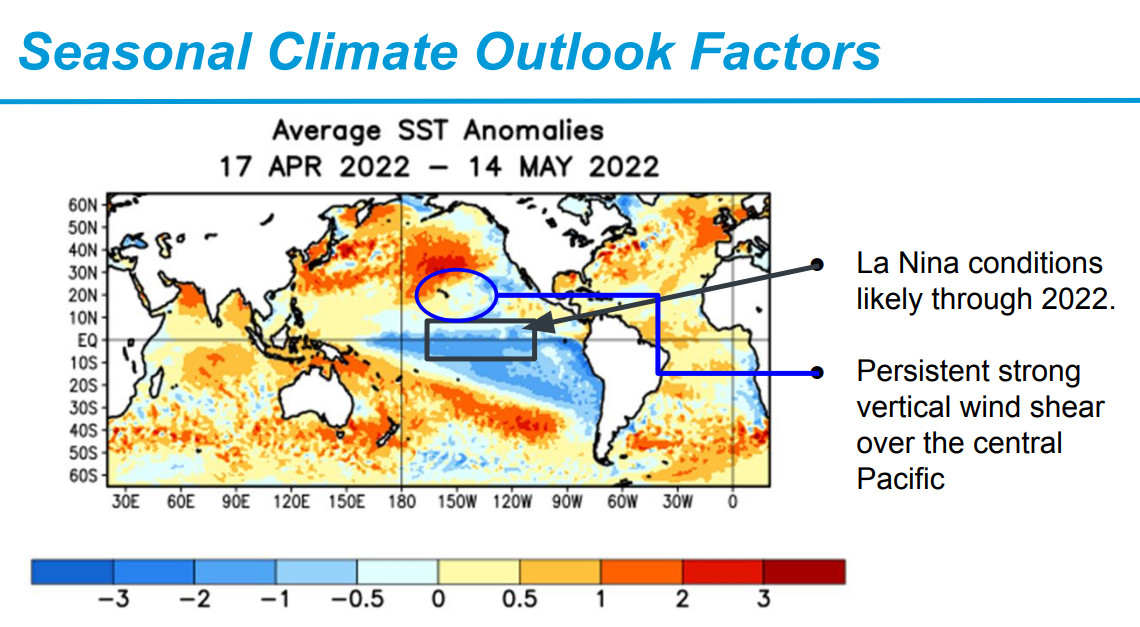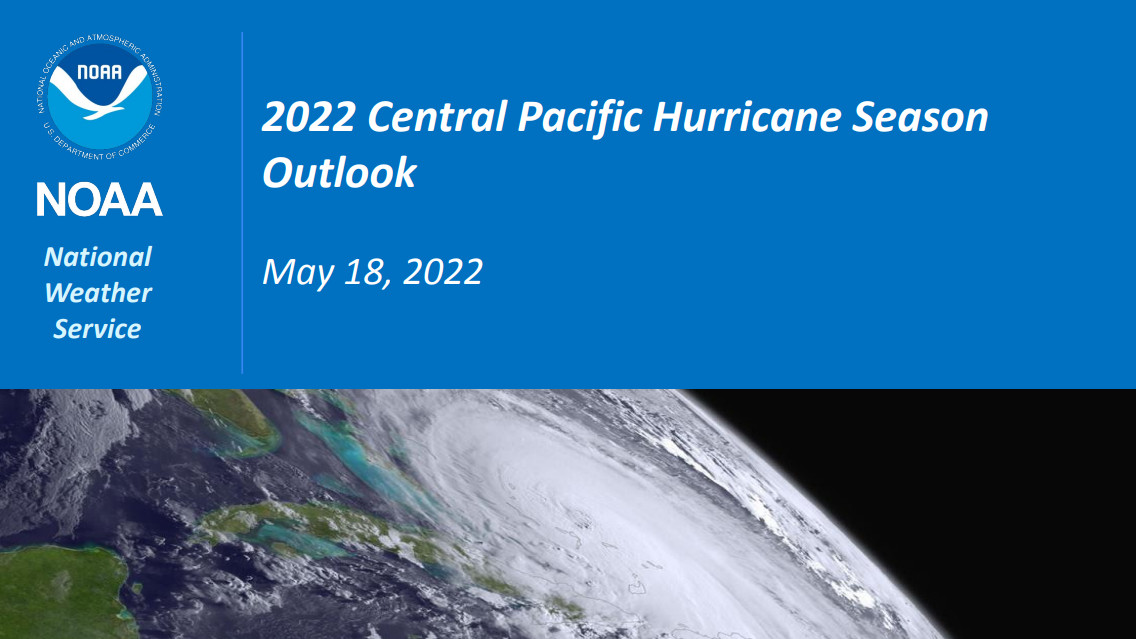2022 Central Pacific Hurricane Season Outlook Media Briefing, video courtesy NWS Honolulu via YouTube
(BIVN) – The ongoing La Nina pattern in the Pacific is likely to result in a below-normal hurricane season for Hawaiʻi, forecasters announced on Wednesday.
Officials with the National Oceanic and Atmospheric Administration gave a media presentation on Wednesday, ahead of the June 1st start of the Central Pacific hurricane season, and shared this information:
There is a 60% chance of below-normal tropical cyclone activity during the Central Pacific hurricane season this year, according to NOAA’s Central Pacific Hurricane Center and NOAA’s Climate Prediction Center, divisions of the National Weather Service. The outlook also indicates a 30% chance for near-normal activity, and only a 10% chance of an above-normal season.
For the season as a whole, 2 to 4 tropical cyclones are predicted for the Central Pacific hurricane region, which is located north of the equator between 140°W and the International Date Line. This number includes tropical depressions, named storms and hurricanes. A near-normal season has 4 or 5 tropical cyclones.
“This year we are predicting less activity in the Central Pacific region compared to normal seasons,” said Matthew Rosencrans, NOAA’s lead seasonal hurricane forecaster at the Climate Prediction Center. “The ongoing La Nina is likely to cause strong vertical wind shear making it more difficult for hurricanes to develop or move into the Central Pacific Ocean.”

image from National Oceanic and Atmospheric Administration slide presentation shared with media on Wednesday
This outlook is a general guide to the overall seasonal tropical cyclone activity in the Central Pacific basin, and does not predict whether, or how many, of these systems will affect Hawaii. The Central Pacific hurricane season begins June 1 and runs through November 30.
“Hurricane Iniki, a major hurricane, directly hit Kauai 30 years ago this year, and those impacted still remember the incredible destructive power Iniki delivered,” said Chris Brenchley, director of NOAA’s Central Pacific Hurricane Center. “Throughout the state of Hawaii, we must take note that the possibility of a hurricane in these islands is real. Heed the advice of public safety officials. Make a preparedness plan, and communicate it to your friends and family. Together, we can make our communities more weather ready and resilient.”
The Central Pacific Hurricane Center continuously monitors weather conditions, employing a network of satellites, land- and ocean-based sensors, and aircraft reconnaissance missions operated by NOAA and its partners. This array of data supplies the information for complex computer modeling and human expertise, which are the basis for the Center’s storm track and intensity forecasts. These forecasts are made available to the public and media, and help provide critical decision support services to emergency managers at the federal, state and county levels.


by Big Island Video News9:01 am
on at
STORY SUMMARY
HONOLULU, Hawaiʻi - There is a 60% chance of below-normal tropical cyclone activity during the Central Pacific hurricane season this year, according to NOAA officials.